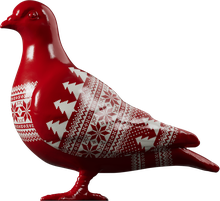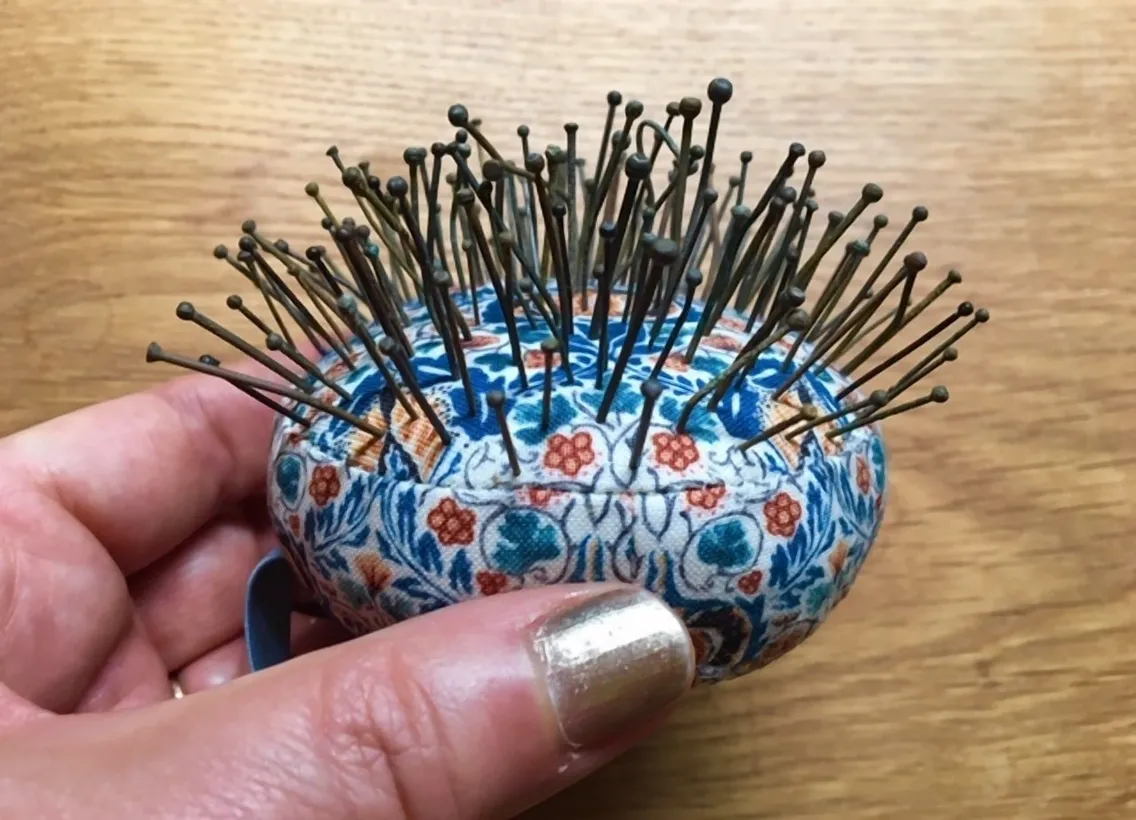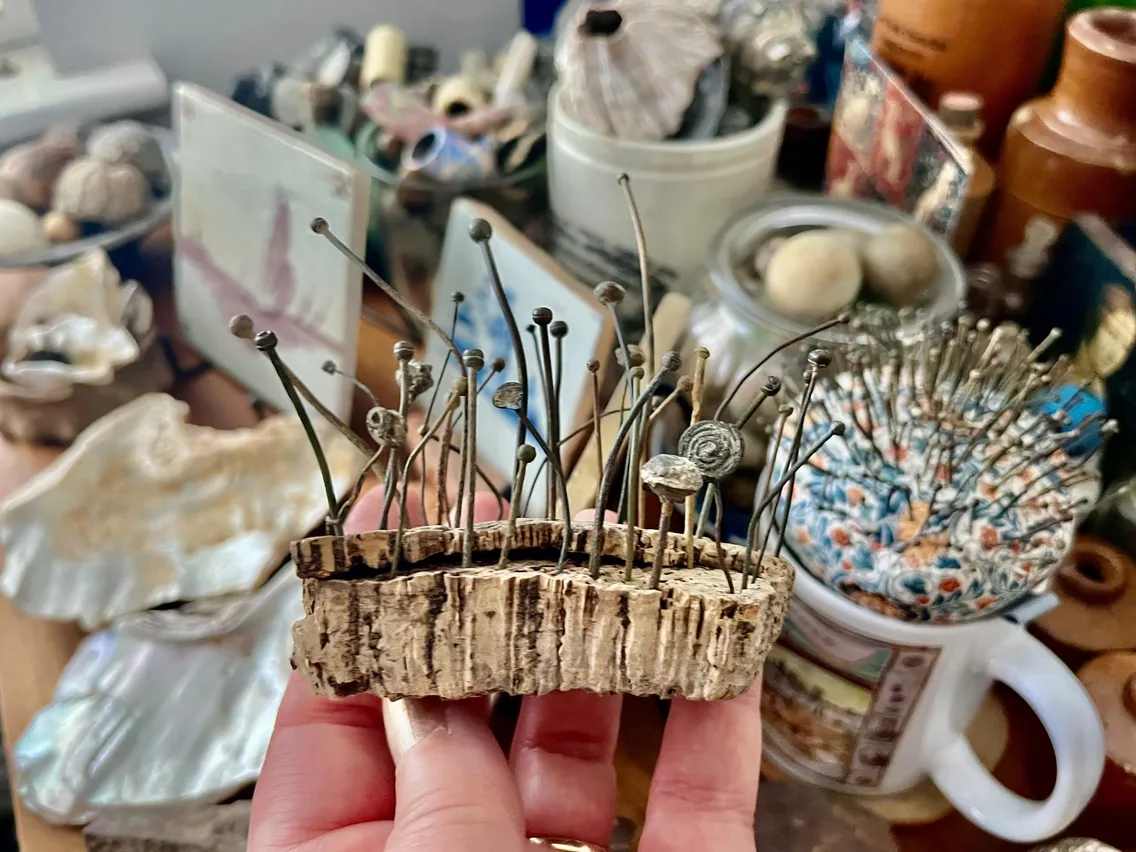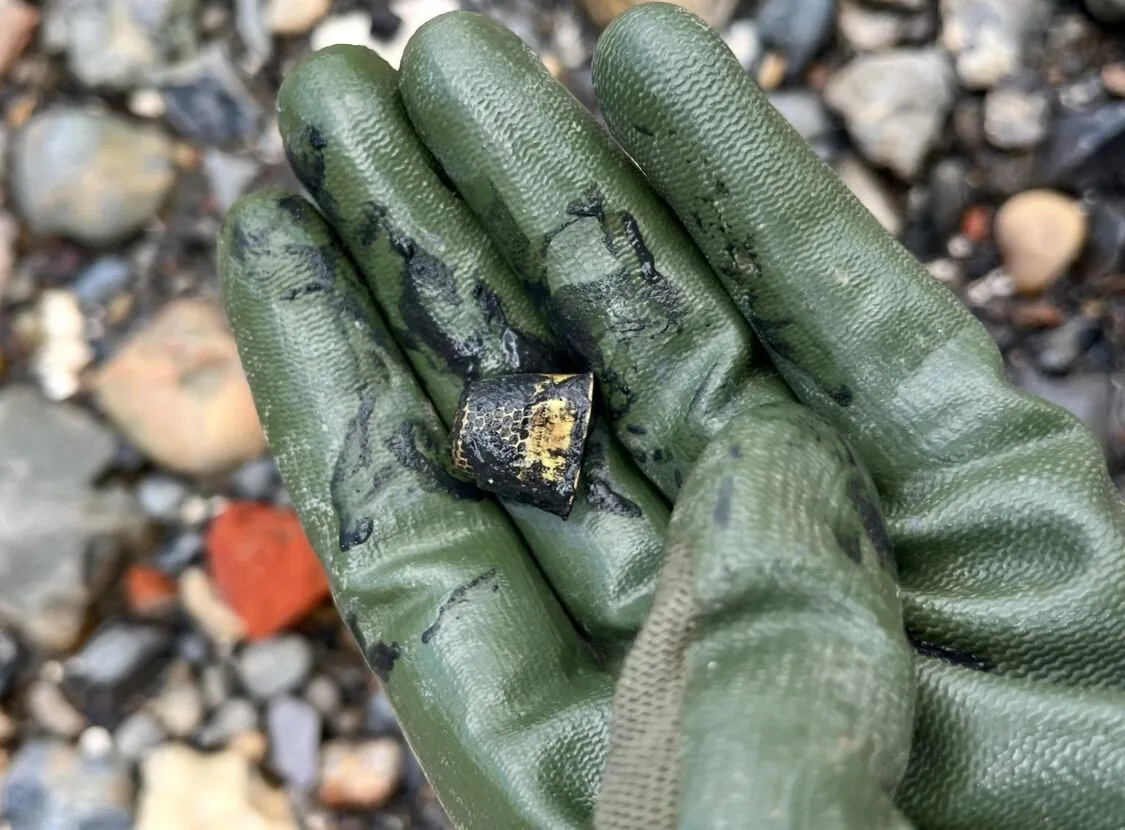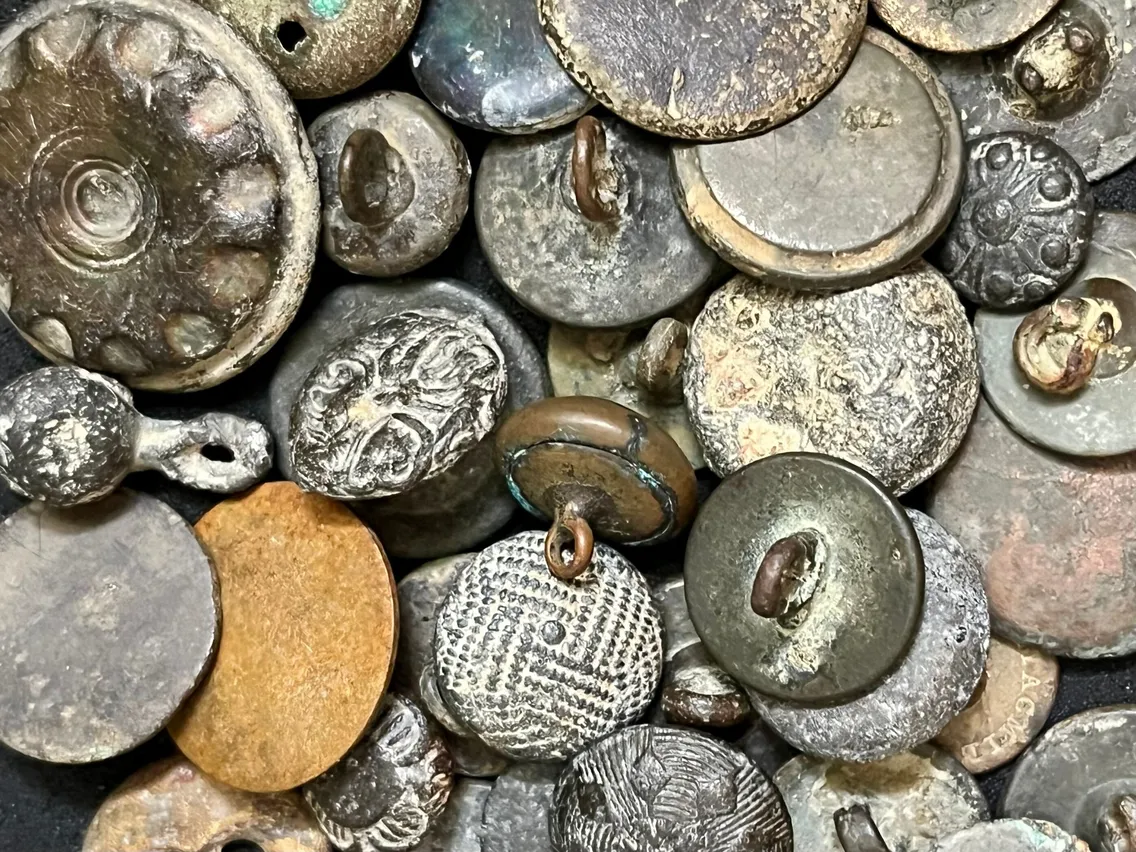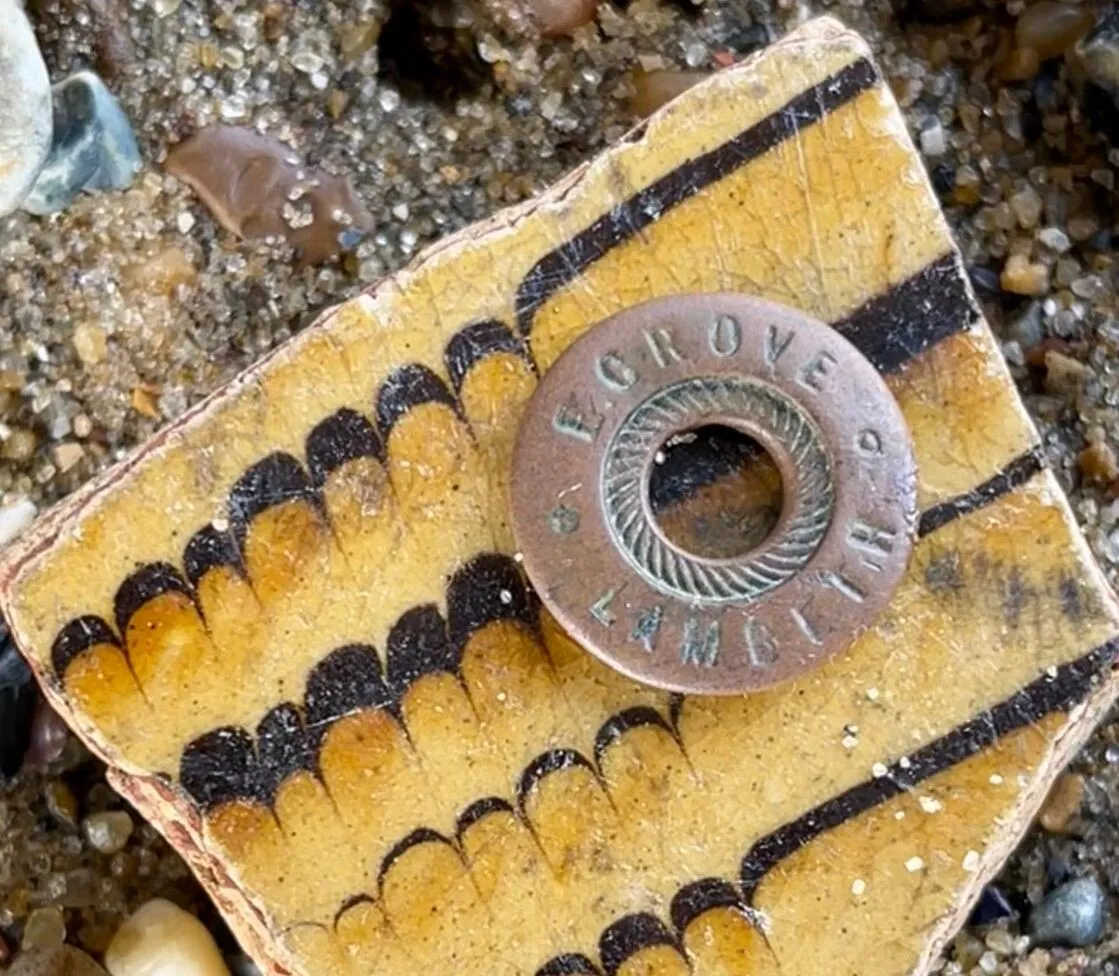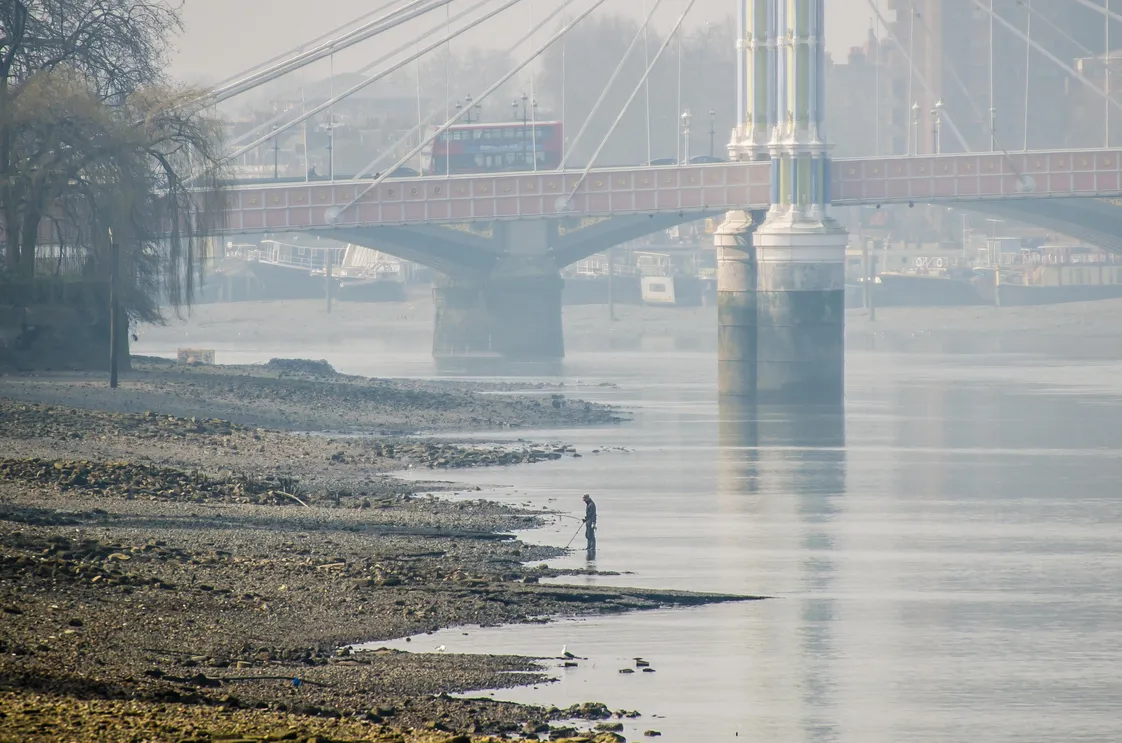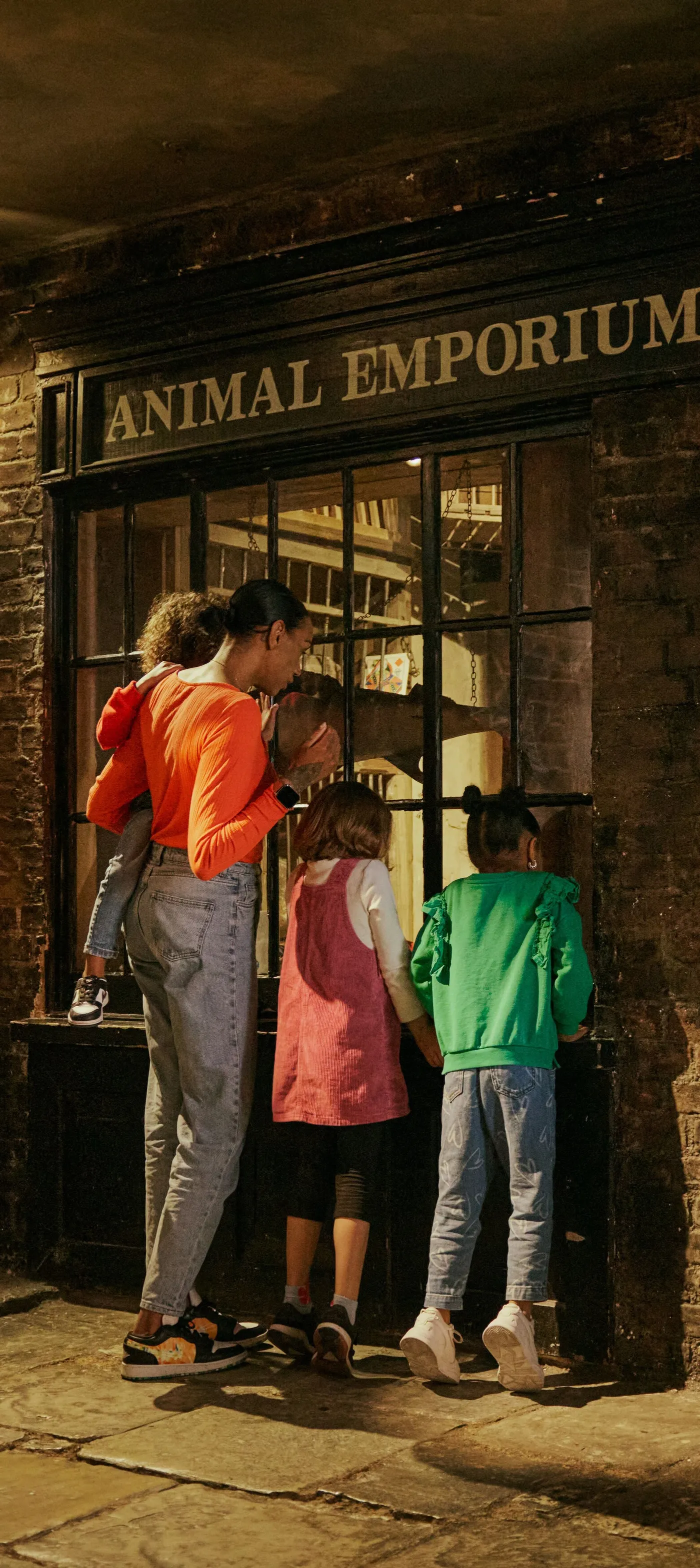05 November 2025 — By Liz Anderson
Buttons & pins: Haberdashery from the Thames
While mudlarking on the Thames foreshore, Liz Anderson finds untold stories of ordinary Londoners through centuries-old dress pins, buttons and forgotten treasures.
My love for mudlarking began 10 years ago on a gloomy winter morning. Steel grey clouds scudding across the sky, the weather matching my mood. I was at a professional crossroads in my life, uncertain which direction to take.
Looking out over the river near the Oxo Tower, I spotted a lone figure walking slowly on an empty foreshore, eyes down, searching. I thought he might have lost something, so I went down to see if I could help.
He explained he was mudlarking – searching the tidal River Thames for lost artefacts from the past.
I scanned the gravel around me and soon noticed a blue-on-white 17th-century tin-glazed pottery sherd from a charger or plate, with a blowsy, hand-painted fern design. Picking it up, I was instantly transported.
Someone had once used and treasured this item when it was complete, and I felt an immediate connection to them, despite the hundreds of years that separated us.
And so, quite randomly, the next chapter of my life began. I’m not sure I believe in signs as such, but, in this instance, the Thames was pointing the way.
“Mudlarking is...fundamentally about finding out about ordinary people”
I’ve always loved history. It was my favourite subject at school, and I later graduated in history from university, eventually ending up teaching it. Deeply rooted in kings, queens, battles and conquests, I always felt there was a missing component to all this. I found it on that winter’s day on the foreshore. Or maybe it found me.
Mudlarking is the final piece of that historical jigsaw. It’s fundamentally about finding out about ordinary people whose names we will mostly never know. Yet, their stories come back to life in the artefacts we find. This is what draws me back repeatedly.
Pinning down the Thames treasures
I’ve been fortunate to find many fascinating artefacts, but it’s the simple ones I treasure the most. Like the bead I recently brought over to Stuart Wyatt, the Finds Liaison Officer for London.
I have a passion for haberdashery, and old handmade dress pins are some of the most common mudlarking finds from the foreshore. They are ubiquitous because for centuries, Londoners, rich or poor, were literally pinned into their clothing. Apparently, it took over 2 hours to pin Queen Elizabeth I to hers.
I know some mudlarks don’t pick them up anymore, but, for myself, no trip to the river is complete without a handful of these beauties coming home with me. They’re neatly stored in pin cushions on my finds display cabinet.
Over centuries, pins have been made from a variety of materials – bone, ivory, precious metals, even thorns. The bulk of my Thames-found dress pins are 14th–18th century copper-alloy. Handmade in a range of lengths and sizes, each one is unique. They’re mostly found in muddy metal patches that appear at low tide.
I keep a mudlarking notebook complete with little hand-drawn maps of secret ‘pinny patches’. These patches come and go because the river is dynamic and changes the way it deposits and moves artefacts. It likes to tease us.
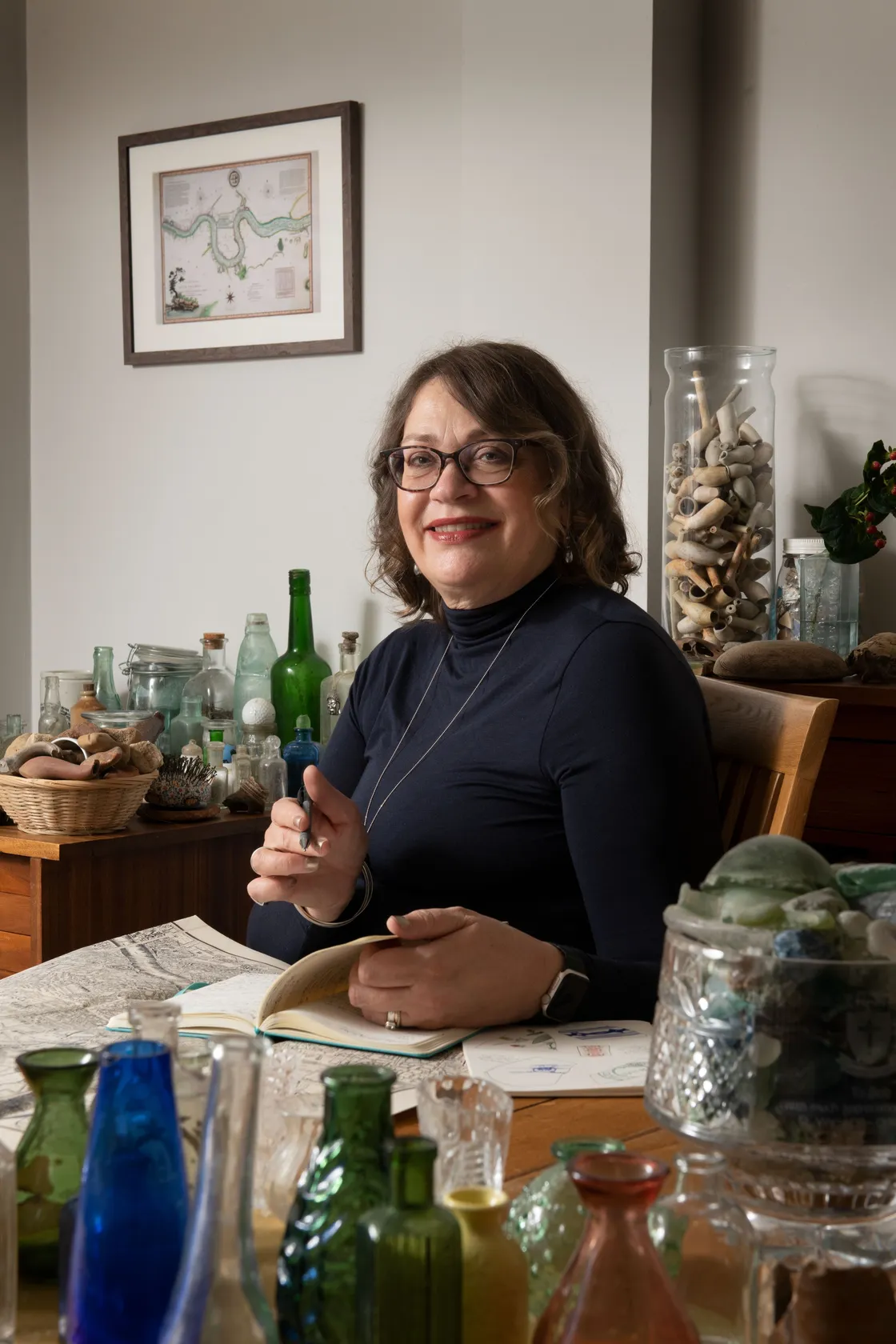
Liz Anderson with her notebook and surrounded by her finds.
It’s all about buttons
From my mudlarking friends, I learnt that metal patches not only contained dress pins, but also hooks, fasteners, buttons and, if you were very lucky, a thimble.
It’s easy to imagine these being lost from jackets, shirts, trousers, shawls and whatnot. Perhaps, belonging to those who once worked on the Thames, or falling from clothing as people walked London’s busy, dirty streets.
I’ve found many Thames buttons. The oldest are from the early 18th century, made from pewter, an alloy of tin and lead. These are often beautifully decorated with delicate hearts, swirls, roses and a range of other designs. You can see some examples of these buttons at the ongoing Secrets of the Thames exhibition at London Museum Docklands.
I’ve also found many Tombac buttons, tarnished by the river. These were popular in the 18th and 19th centuries on jackets and coats. They were made of copper-brass alloy and would have had a silvery or gold sheen when new.
Going down the buttonhole
Tailors’ buttons are also a favourite foreshore discovery. Often inscribed with a name and address, they’re great for finding more information on a once-thriving business.
Researching a recent button find led me to Edward Grove, based at 37–41 Lower Marsh in the borough of Lambeth. The first adverts publicising his tailoring services appeared in 1850, offering everything from butchers’ clothing, waterproofs, painters’ suits, sailors’ clothing to the complete outfit for the Victorian “gent-about-town”.
Pearls of memory from the foreshore
When I first started mudlarking many years ago, I used to regularly find huge oyster shells. It wasn’t long before I spotted my first mother-of-pearl buttons, made from the luminescent inner layer of these shells.
They aren’t native to these islands and nowadays are seen less frequently on the foreshore but were imported. A tangible reminder of global trade and empire, of goods being shipped to the bustling city port of London from around the world.
Every old pearl button found on the foreshore is symbolic of the story of London: its trade, industry, ever-changing population, immigration, regeneration and reinvention. They’re also deeply personal.

A family heirloom – the sewing box belonging to Liz’s mother.
I have vivid childhood memories of my mother, a keen seamstress in her time, who made many of our clothes when she was younger. I remember her selecting fabrics, pinning hems, sewing on hooks and buttons, shiny pins scattered on her worktable.
She recently gave me her old sewing box with its buttons, beads, and an old thimble and needle set from the late 1950s. A family haberdashery heirloom that will one day be passed on to my daughter or son.
Liz Anderson is a mudlark and historian who writes a blog at amudlarksdiary.com
Please note that you must have a permit from the PLA to go mudlarking on the Thames Foreshore.

